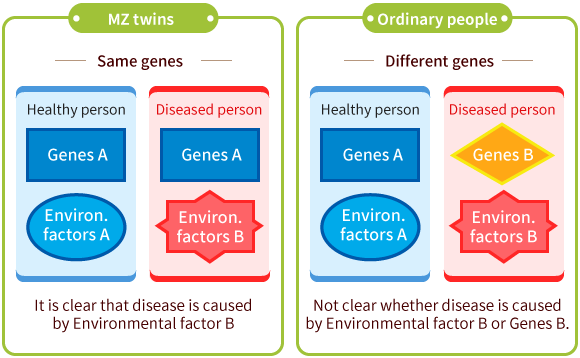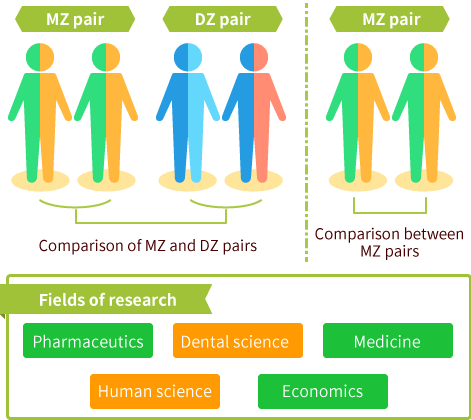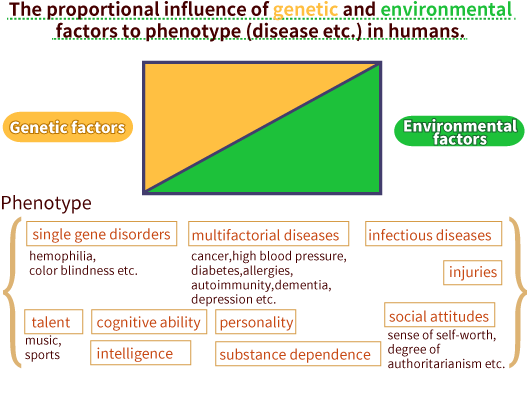What can we learn from twin research?

As said on page ”Twins research and preventive medicine”, susceptibility to disease, abilities and personality etc. are governed by genetical and environmental factors.
The problem with conventional studies conducted on ordinary people is that the participants’ genetic factors and environmental factors are both different from everyone else, making it impossible to determine the degree of influence of the environmental factors on a disease, no matter how many people are studied. However, because the genes of monozygotic twins are identical, it is possible, in a situation where one twin has a disease and the other does not, to narrow down the reason of the development of that disease to environmental factors. In addition, by additionally comparing monozygotic (MZ) twins with dizygotic (DZ) twins who share half of their genes into the comparison, the respective degrees of influence of genetic and environmental factors on the disease can be determined.

In summary, it is easy to imagine the respective proportions of the influence of genetic and environmental factors being calculated in fields such as epidemiological studies, regarding questions such as the presence or absence of disease, or based on clinical test values such as blood tests. However, similar calculations can also be made based on psychological test results or behavioral statistics, regarding questions such as individuals’ economic views, and in all fields of learning that involve the study of human beings by using quantifiable values.












